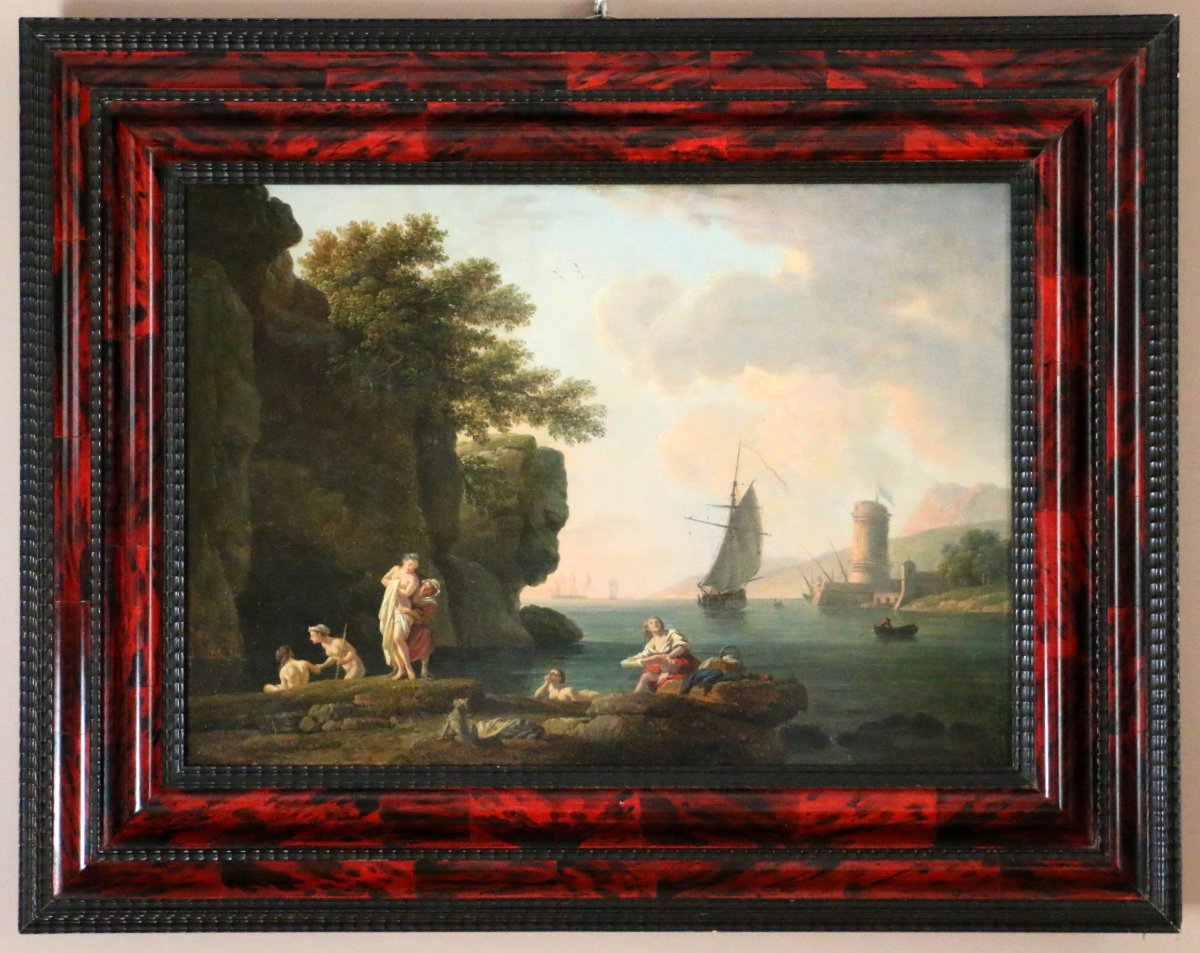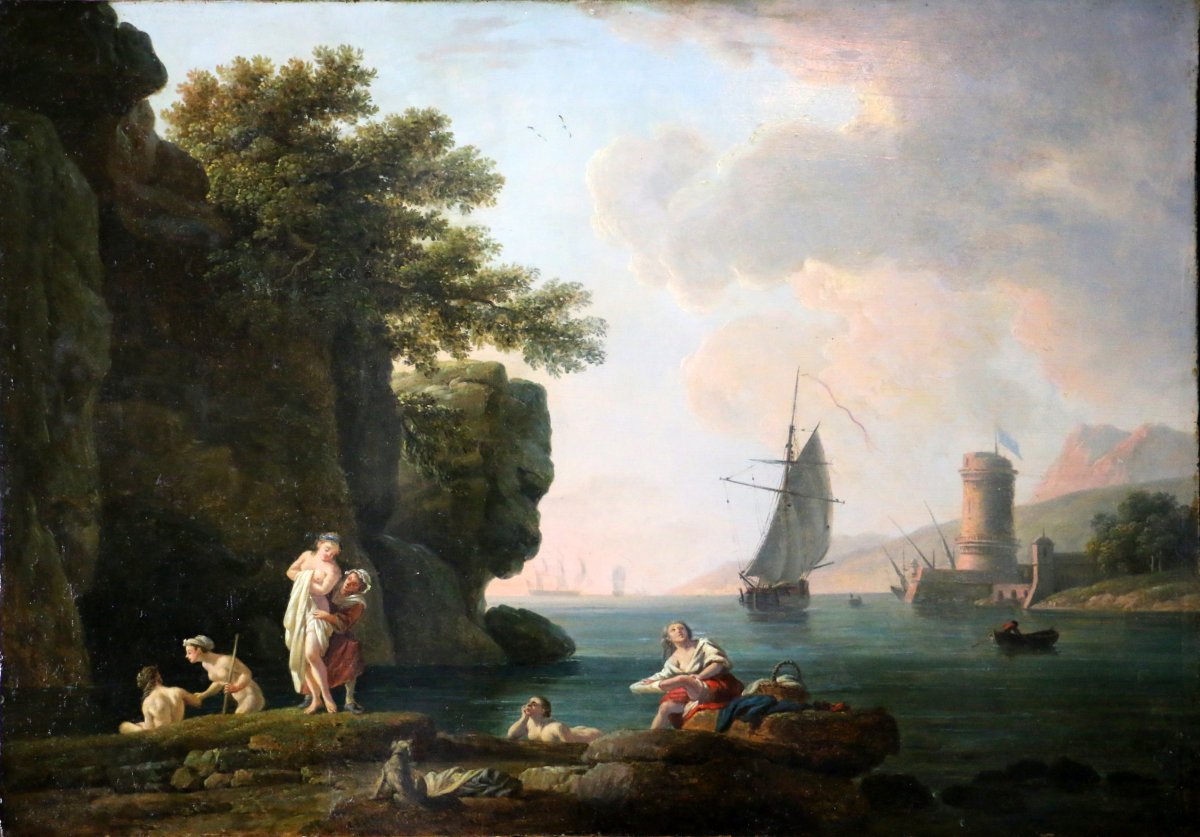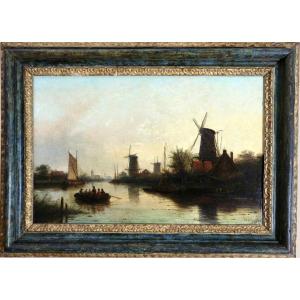Oil on paper mounted on panel of 56 cm by 39 cm
77 cm by 61 cm frame
Our painting is most certainly a workshop revival (in the same sense as the original) of the painting signed Vernet and dated 1779 (sold by Fraysse on April 2, 2008, oil on canvas 55 cm by 40 cm, € 50,000 hammer ). It is painted on paper or fine cardboard mounted on panel (traces of pencil lines observed during cleaning, we are therefore talking about a drawing on paper) There are traces of a signature at the bottom left-illegible.
Joseph Vernet (1714-1789)
Claude Joseph Vernet was trained in the South West of France. Its masters are Louis René Vialy, Philippe Sauvan then Adrien Manglard. In 1734, Vernet left for Rome to study the work of landscape painters and marine painters like Le Lorrain, whose style and subjects can be found in his paintings. He built up a solid international network during this trip, and subsequently in Paris via the salons, the Royal Academy and the Masonic lodges. The cosmopolitan sociabilities that this network arouses allow him to deploy his talents in society to launch, deliberately as his book of reason shows, the fashion of navies across Europe, in particular by skillfully exploiting the impact produced by the greatest royal commission. paintings of the reign of Louis XV: that, in 1753, of twenty paintings of the ports of France. The King ordered twenty-four paintings of ports in France from him to provide information on life in the ports; only fifteen paintings will be produced, from 1753 to 1765 (Marseille, Bandol, Toulon, Antibes, Sète, Bordeaux, Bayonne, La Rochelle, Rochefort and Dieppe); some ports are represented more than once. Vernet was asked to represent on each painting, in the foreground, the activities specific to the region. These paintings are therefore true testimonies of life in ports 250 years ago, and make him one of the greatest painters of the navy. They earned him recognition, during his lifetime, by most of the nobles most attached to the navy - thus, the Marquis de Laborde. From then on, Vernet could advantageously sell his navies, "by the weight of gold" if one believes Pierre-Jean Mariette. In fact, the list of its sponsors is as varied and international as it is prestigious; it includes, among other famous figures, Catherine II of Russia. Admirer of Poussin and of Lorrain, from which he uses the effects of seascapes in the setting sun also declined in moonlight, Vernet nevertheless managed to create, through hard work, his own style. It generally represents nature by giving a lot of space to the sky; he also knows how to animate each place with characters and scenes from everyday life. His son Carle Vernet, his grandson Horace Vernet and his great-grandson Émile Vernet-Lecomte were also painters. An English painter, Gabriel Mathias, was Joseph Vernet's broker for Great Britain.


























 Le Magazine de PROANTIC
Le Magazine de PROANTIC TRÉSORS Magazine
TRÉSORS Magazine Rivista Artiquariato
Rivista Artiquariato
